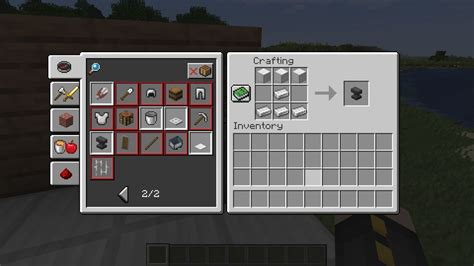Anvil Crafting Recipe: A Comprehensive Guide
Finding the right anvil crafting recipe can be tricky, especially if you're new to the world of crafting and forging. This comprehensive guide will walk you through everything you need to know about creating your very own anvil, from gathering materials to the final forging process. We'll cover various techniques and provide tips for crafting a high-quality, durable anvil perfect for your needs.
Gathering the Necessary Materials
Before you begin the crafting process, it's crucial to gather the essential materials. The specific materials will depend on the type of anvil you're aiming to create, but here's a general list of common components:
1. High-Carbon Steel:
This is the most crucial component of an anvil. High-carbon steel offers the necessary hardness and durability to withstand the impacts of hammering and shaping metal. The amount needed will vary depending on the desired size and weight of your anvil. Consider sourcing a large piece of high-carbon steel from a reputable supplier. Remember, quality materials directly impact the final product's longevity.
2. Wrought Iron:
Wrought iron is commonly used for the anvil's body and horn. It provides strength and toughness, acting as a supportive structure for the high-carbon steel face. You can often find wrought iron scraps at scrap yards or metal recycling centers.
3. Horn Stock:
The horn of an anvil is essential for shaping curved metal pieces. This typically requires a separate piece of wrought iron or steel, carefully shaped and welded to the main body. Ensure your horn stock is strong and durable enough to withstand the stresses of hammering.
4. Additional Hardware:
Depending on your design, you may need additional components like:
- Bolts and nuts: For securing the horn and other parts.
- Welding rods: For joining the different components together.
- Grinding wheels and abrasive tools: For shaping and finishing the anvil.
The Anvil Crafting Process: A Step-by-Step Guide
Crafting an anvil is a complex process that requires specific skills and equipment. While providing exact measurements is difficult due to the variability in desired anvil sizes, the following steps outline the general procedure:
1. Preparing the Steel:
Begin by preparing the high-carbon steel face. This might involve cutting, shaping, and heat treating the steel to achieve the desired hardness and form. Proper heat treatment is critical for creating a durable anvil face.
2. Assembling the Body:
Next, assemble the main body of the anvil. This typically involves welding the wrought iron components together to form a solid base. Ensure all welds are strong and free of defects.
3. Attaching the Horn:
Carefully attach the horn stock to the anvil body. Proper welding and reinforcement are necessary to ensure the horn remains secure under heavy use.
4. Shaping and Finishing:
Once the main structure is complete, begin shaping and finishing the anvil. This involves grinding, filing, and polishing to achieve the desired surface finish. Pay close attention to the anvil's face, ensuring it's perfectly flat and smooth.
5. Heat Treating (Final Stage):
A final heat treatment might be necessary, depending on your materials and construction methods, to ensure the anvil's durability and longevity. This step helps maintain the hardness of the high-carbon steel face and the structural integrity of the entire anvil.
Tips for Crafting a High-Quality Anvil
- Use high-quality materials: This is paramount for creating a durable and long-lasting anvil.
- Proper heat treatment is crucial: This step ensures the necessary hardness and strength of the steel.
- Solid welds are essential: Weak welds can lead to structural failure.
- Take your time: Rushing the process can lead to mistakes.
- Safety First!: Always prioritize safety when working with high-temperature materials and heavy equipment. Wear appropriate protective gear.
Crafting an anvil is a challenging but rewarding project. By following this guide and prioritizing safety and precision, you can create a durable and functional anvil tailored to your specific needs. Remember, the quality of your anvil depends heavily on the quality of your materials and the precision of your work. Good luck, and happy forging!
